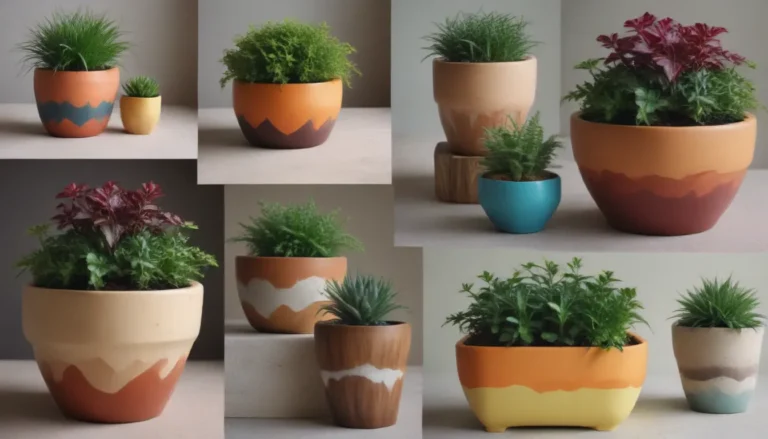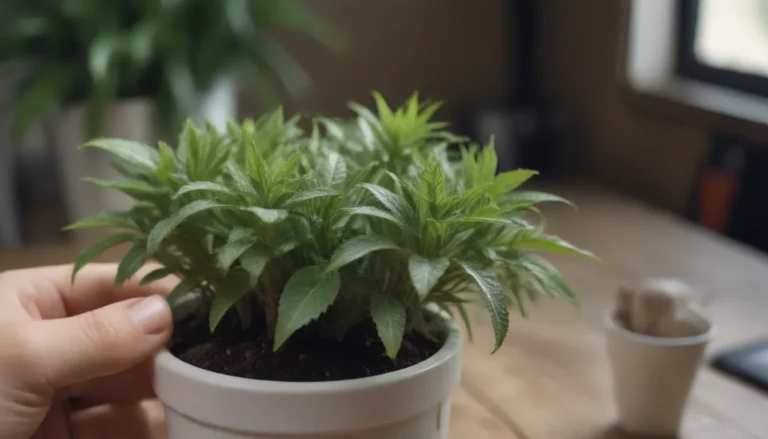Ultimate Guide: Growing and Caring for Lacecap Hydrangea

If you’re looking to add a touch of elegance to your garden, lacecap hydrangeas are the perfect choice. These beautiful shrubs with their flat caps of frilly-edged flowers are sure to make a statement in any landscape. In this comprehensive guide, we will walk you through everything you need to know to successfully grow and care for lacecap hydrangeas, from planting to pruning and everything in between.
What are Lacecap Hydrangeas?
Lacecap hydrangeas, also known as Hydrangea macrophylla, are part of the bigleaf hydrangea species native to Japan. These stunning shrubs feature flower heads composed of a central set of small florets surrounded by larger, showier flowers. With wide, dark green serrated leaves providing a lush backdrop, lacecap hydrangeas are not only beautiful but also fast-growing, averaging two feet per year.
Lacecap Hydrangea Care Tips
Here are the main care requirements for growing a lacecap hydrangea:
Light
Lacecap hydrangeas thrive when planted in a location that receives partial sun. Morning sunlight and afternoon shade are ideal to prevent the foliage from drooping, turning yellow, or scorching. Be mindful of not planting them in too much shade as this can result in weak stems and fewer blooms.
Water
Proper watering is crucial for the health of lacecap hydrangeas. They require enough water to thrive but do not tolerate overwatering. To determine if your plant needs water, stick your finger about four inches into the soil. If it feels dry, it’s time to water. Deep watering once a week is recommended, ensuring that the soil is saturated without becoming waterlogged.
Soil
Lacecap hydrangeas prefer rich, well-draining, and evenly moist soil amended with organic matter like compost or manure. The bloom color of some cultivars can change based on the acidity of the soil. Blue flowers indicate acidic soil (pH 5.5 or lower), while pink blooms suggest alkaline soil (pH 7.0 or higher). Consider adding organic mulch around the shrub to help retain moisture.
Temperature and Humidity
These shrubs thrive in moderately warm weather and humidity. Check the hardiness zone of your specific variety to ensure it can withstand winter temperatures in your area. Avoid planting cultivars that won’t survive cold temperatures below Zone 6 in your region.
Fertilizer
Fertilize your lacecap hydrangea with a balanced fertilizer in early spring following product label directions. Organic compost can also be blended into the soil annually. Avoid fertilizing in late summer as new growth stimulated by feeding is susceptible to winter damage.
Types of Lacecap Hydrangeas
Explore a few popular lacecap hydrangea cultivars to add variety to your garden:
- ‘Twist-n-Shout’
- ‘Bluebird’
- ‘Zorro’
- ‘Lanarth White’
- ‘Lady in Red’
Pruning and Propagating
Understanding how to prune and propagate your lacecap hydrangeas is essential for maintaining their health and promoting growth:
Pruning
Lacecap hydrangeas bloom on old wood, so it’s best to prune them right after flowering in the summer. Remove any dead or diseased stems at any time of the year. Deadheading spent flowers is optional, with many gardeners choosing to leave them for winter interest.
Propagating
While propagating lacecap hydrangeas is feasible, it’s limited by the fact that cultivars don’t produce true-to-type plants from seed. For non-trademarked varieties, use softwood stem cuttings from the current season’s growth in early summer, allowing enough time for rooting before planting in the fall.
Potting, Overwintering, and Common Pests
Learn how to pot, overwinter, and protect your lacecap hydrangeas from common pests:
Potting and Repotting
Consider planting your lacecap hydrangea in a container with well-draining soil. When repotting, choose a pot one size larger and refresh the soil annually to accommodate growth. Ensure frequent watering to prevent the plant from drying out.
Overwintering
While lacecap hydrangeas grown in garden soil within their hardiness range don’t need winter protection, potted plants should be insulated with mulch or other protective measures to shield roots from freezing temperatures.
Common Pests & Plant Diseases
These shrubs are susceptible to fungal diseases and attract aphids. Prevent fungal spread by spacing plants adequately and avoiding overhead watering. Treat heavy aphid infestations with neem oil or insecticidal soap.
How to Get Lacecap Hydrangea to Bloom
Promote blooming and maintain healthy flowers by understanding these key factors:
- Bloom Months: Lacecap hydrangeas typically bloom from mid to late summer, with some varieties extending into fall.
- Bloom Duration: The flowers of lacecap hydrangeas remain attractive well after fresh, drying beautifully on the shrub.
- Flower Appearance and Scent: Enjoy the flat ring of four-petaled florets in white, pink, or blue without any fragrance. Adjust soil acidity for blue or pink blooms.
- Encouraging More Blooms: Ensure adequate sunlight, proper pruning, and protect flower buds from late spring frosts for continuous blooming.
Common Problems and Solutions
Watch out for these common issues that may affect the health of your lacecap hydrangeas:
- Yellow Leaves: Indicate overwatering, underwatering, or excess fertilizer. Adjust watering and flush the soil if necessary.
- Drooping Leaves: Normal response to hot temperatures; avoid overwatering.
- Browning Leaves: Caused by fungal or bacterial diseases or fertilizer overload. Flush with water to remove excessive fertilizers or additives.
In conclusion, lacecap hydrangeas are stunning additions to any garden, offering beauty and elegance throughout the blooming season. By following the care tips outlined in this guide, you can ensure your lacecap hydrangeas thrive and continue to enchant you with their exquisite flowers year after year. Experiment with different cultivars, pruning techniques, and propagation methods to create a diverse and flourishing hydrangea garden in your own backyard. Happy gardening!





